On Monday, I counted down a top ten list of new reef fishes described in the last year, and in this list we’ll be reminiscing over a few more of 2016’s biggest finds. There were so many incredible new discoveries, many of which were made thanks to the tireless efforts of aquarium collectors. Several of the fishes we’ll be discussing are still awaiting their formal scientific naming, some species entered the aquarium trade for the first time, and there were a few spectacular finds from mesophotic reefs of previously known species that had only rarely been encountered.
#10 Meiacanthus geminatus Collected In The Philippines

Meiacanthus geminatus from Lubang, Philippines. Note the elongated pelvic and caudal fin rays of this male specimen. Credit: Barnett Shutman / RVS Fishworld
It was just last week that I reported on what is likely the first time the beautiful Twin Fangblenny has been collected for the aquarium trade. This handsome fish, with its sharp patterning and attractive colors, has been known to science since the 1970’s, but, despite being abundant in its natural habitat, this fish has only rarely been photographed before. This find comes to us courtesy of RVS Fishworld, a Philippines-based wholesaler that will feature prominently in this list. Thanks to the thorough documentation of their many finds this year, we are getting a great look at some rarely seen species from the northern reefs of the Coral Triangle. The rarity of this particular fangblenny can likely be chalked up to its limited distribution in the waters of the Sulu Sea, where little aquarium collection has taken place historically. With increased collection here, we can expect many more discoveries in the coming years.
#9 A Fluorescent Fairy Wrasse From The Timor Sea
Monsoon Aquatics has been procuring some interesting fishes from the Timor Sea, just north of Australia. Their biggest find was a newly recognized species of fairy wrasse, Cirrhilabrus hygroxerus, but they also posted images of another unusual fish which was recognizable as an undescribed species reported previously from some of the little-explored reefs of Eastern Indonesia. This fish, which I’ve called the Banda Fairy Wrasse and which Rudie Kuiter refers to as the Dull-head Wrasse, is an apparent close relative of the Orangeback Fairy Wrasse from Northern Sulawesi. In speaking with Cameron Bee of Monsoon Aquatic, I brought up the ability of this group to fluoresce under ultraviolet light, and, before long, we’d confirmed that this new fish has the same abilities, glowing a bright red throughout its body. Nowadays, you’ll see this fish marketed as Darwin’s Glow Fairy Wrasse, and hopefully it won’t be long until it gets a proper scientific name.
#8 A Twintail Lunare Wrasse
It’s not uncommon to see Bettas and Goldfishes with a mutation of the caudal fin causing it to be doubled, but finding this unusual abnormality in a marine species is quite uncommon indeed. Lucky for us, an example showed up earlier this year from the Philippines in the form of a twintailed Thalassoma lunare. This specimen had reached a fairly large size, indicating that its supernumerary finnage was no great hindrance.
#7 The Sailfin Fairy Wrasse
As we’ll see, there was no shortage of exciting discoveries among the Cirrhilabrus fairy wrasses. Aside from two newly recognized species (C. hygroxerus, C. isosceles), there was also the best documentation yet for what appears to be an undescribed member from the Celebes Sea. This pulchritudinous piscine had previously been spotted from the waters off Eastern Borneo and south towards Bali, but aquarium specimens had been quite rare up until now. With numerous specimens now having been collected from the southern island of Mindanao in the Philippines by RVS Fishworld, we are getting are best look yet at this fish. Its colors and fin shape call to mind C. rubripinnis (from further north in the Philippines) and C. tonozukai (from Eastern Indonesia), but it’s clear that the Sailfin Fairy Wrasse is an entirely different beast.
#6 An Unexpected Rainbow Wrasse From Japan
The Suezichthys wrasses are only rarely seen in captivity, as these fishes prefer deeper waters in more subtropical climes. One undescribed member of this group was recently collected from the mesophotic reefs of the Northern Hawaiian Islands (along with the recently described Prognathodes basabei and a Tosanoides soon to be named for Barack Obama). But not long after these discoveries, an apparent close relative of this Hawaiian fish was successfully captured by Deep Sea Challengers from 240 meters at Okinawa. The video above gives us our first ever glimpse of a fish that nobody had known existed until this chance discovery.
#5 The Whitemargin Anemonefish of Madagascar
For fans of rare anemonefishes, the highlight of 2016 had to be the collection of one of the world’s rarest and least-known species, the Whitemargin Anemonefish (Amphiprion cf latifasciatus). With one of the smallest known distributions in the genus, this is a legitimately rare fish and one which there is a strong need to bring into captive propagation, as it is unlikely that the wild population can tolerate excessive collection for the aquarium trade. Known only from a few scattered reefs off the coast of Northeastern Madagascar (an area with minimal reef habitats), this distinctive fish boasts a wide, white band on its body and white margins to the caudal fin. It’s large size and beautiful appearance make this undescribed anemonefish one of the true holy grails in Amphiprion.
#4 Prognathodes guyotensis Filmed For The First Time
Earlier this summer, NOAA’s Okeanos Explorer mission brought fish nerds around the world some of the most exciting deep reef footage ever seen. As the submersible poked around the mesophotic depths of the Mariana Islands, colorful new species of anthias, groppo and tilefish seemed to poke out from behind every corner. But the highlight had to be the first decent images of the mythic Guyot Butterflyfish, a species found only in the deepest of deep reefs and previously known from just a handful of sightings. For those of us who watched it live, it was a moment that won’t soon be forgotten. *wipes away tear*
#3 The Ogasawara Fairy Wrasse
The Ogasawara Islands have been called the “Galapagos of the East”, and for good reason. This small volcanic archipelago forms an important biogeographical melting pot, where fishes from Japan and Micronesia mix, creating an unique mélange of hybrids and endemic taxa. And it was early this year that I broke the news of an incredible new fairy wrasse found in these waters. Over the ensuing months, additional photos were posted by its discoverer, Shuichi Kobayashi, including the colorful mating display of the male shown here. It’s blood red finnage and weakly lanceolate caudal fin are quite unlike anything else in the genus, though it’s clear that this fish is most closely related to the lanceolatus species group. The biggest mystery is whether this is truly a new species or just another of the many hybrids known from the region. Until more specimens are observed and can be adequately studied and compared, this fish will remain one of the most enigmatic discoveries in recent memory.
#2 Centropyge abei Collected From Australia
https://www.facebook.com/koji.wada.56/videos/10209019257072647/
Until this year, only a single specimen of Abe’s Angelfish existed in an aquarium anywhere in the world. Normally found only at great depth in the West Pacific, this species couldn’t even be included in a recent genetic study of the family, as specimens were simply non-existent. So it came as a shock when Cairns Marine hauled one up alive and well from the Coral Sea, giving us our best look yet at this remarkable (if a bit understated) angelfish. Though it may not be quite as visually impressive as some of its shallow-water relatives, C. abei is a fish which haunts the dreams of any serious pomacanthophile.
#1 The Magma Wrasse
My nerdy little heart skipped a beat when I saw the first images of this stunning wrasse posted to Facebook. Discovered deep underwater on an undersea volcano near the famed Cagayan collection station of RVS Fishworld, it took only an instant to realize what I was looking at… the first images of an undescribed member of the Cirrhilabrus lanceolatus group. Like the Ogasawara Fairy Wrasse found earlier in the year, this fish had the same bulky body, short pelvic fins and solidly colored dorsal and anal fins which define the group. And, just as with that fish, its presence in the northernmost islands of the Philippines helps to fill a void in this group’s Indo-Pacific distribution. Rather than being a Philippines endemic, the Magma Wrasse is likely a Micronesian species that reaches its westernmost extent in these remote islands north of Luzon. In all likelihood, the Magma Wrasse is the long-lost Mariana Islands representative of this hugely popular group of wrasses. But we won’t know for sure until the species is studied and described, which will hopefully happen in the next year.

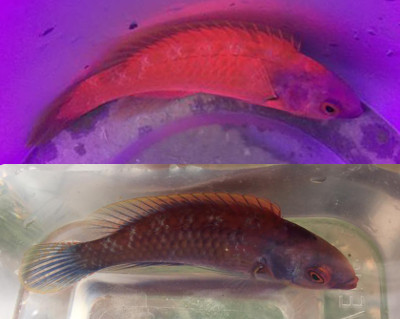
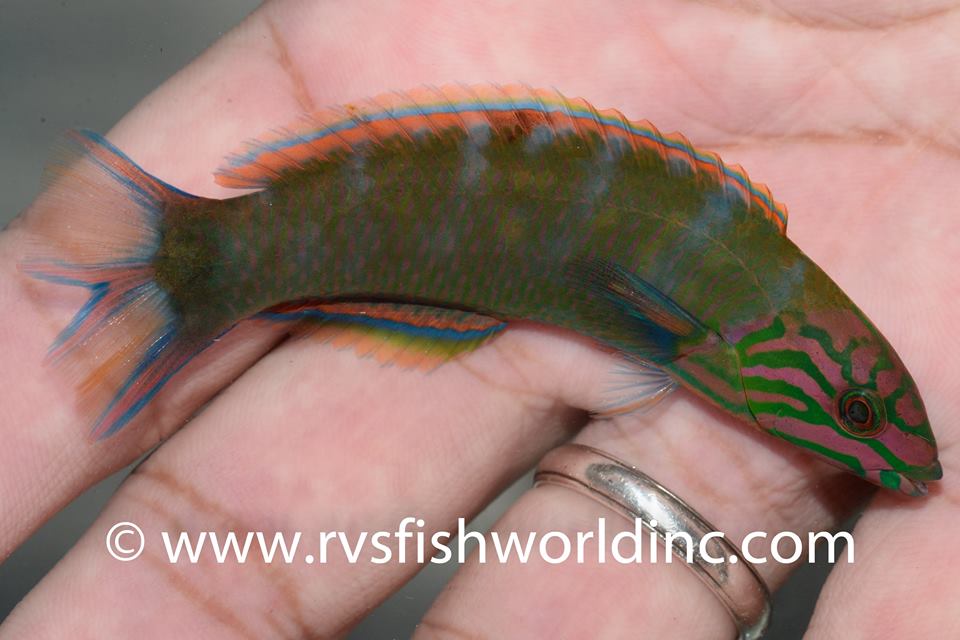
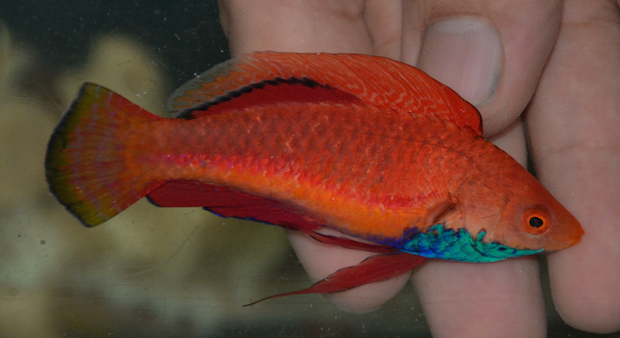
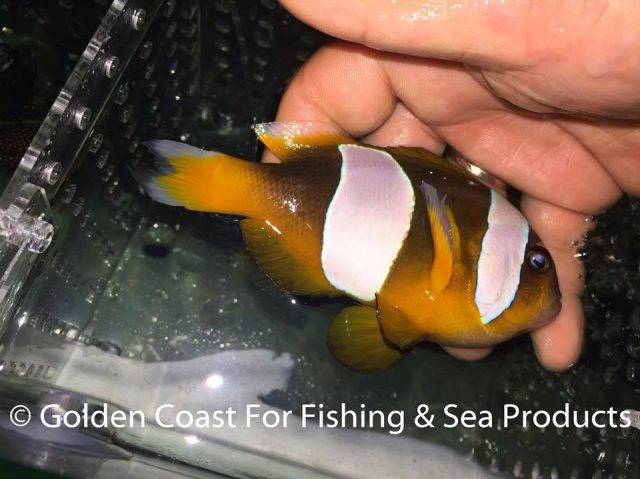

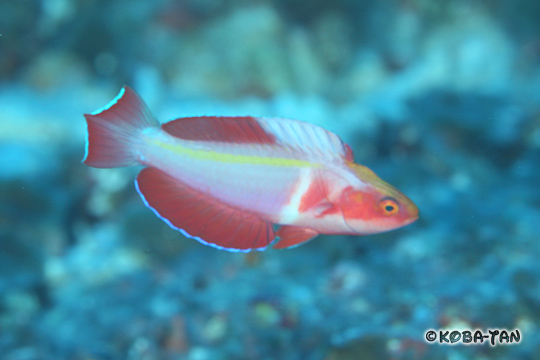









0 Comments